Weifang Hengxin Electric Co., Ltd. cooperated with Qingdao Agricultural University to study the cultivation of tomato and pepper in the greenhouse environment, and set up four kinds of illumination environments: greenhouse low light environment, xenon lamp fill light, fluorescent lamp fill light and greenhouse natural light. Effects of light-filling and supplemental light sources on growth, growth and physiological metabolism of tomato and pepper plants under low light in greenhouse.
The results show that when the light intensity in the photovoltaic greenhouse is lower than that in the solar greenhouse, the xenon lamp can increase the light intensity by 3,616lx under the condition of 45w/m2, and the fluorescent lamp can increase the light intensity by 1077lx, from the growth and strong seedling of pepper and tomato plants. In effect, the light supplementation of both light sources significantly promoted the robust growth of crops and increased the content of chlorophyll, protein and sugar in leaves; among them, the growth of xenon lamp light-filled crops was not significantly different from that in sunlight greenhouses, while fluorescent light was supplemented. Crops are significantly lower than solar greenhouse crops. In summary, under the light conditions of this experiment, the 45w/m2 xenon lamp fill light can meet the normal cultivation and growth of solanaceous vegetables.

The normal growth of crops requires reasonable environmental conditions such as light, temperature, humidity, soil, etc. In the facility cultivation, different types of facilities will form different environmental conditions. In the environmental factors affecting the cultivation of crops, the light environment is the greenhouse. The dominant factor of the internal environment determines the conditions of the light, temperature, humidity and other factors in the greenhouse and even the overall environmental conditions of the greenhouse. If the requirements of the crop for a specific light environment cannot be met, it will affect the normal growth of the crop. Therefore, adjusting the light environment of the facility is the primary condition for achieving high quality and high yield of the facility crop.
The choice of artificial light source must meet the requirements of spectral energy distribution and light intensity. Select a set of fill light system, need to consider the requirements of crops, general factors such as light intensity, light quality, power consumption, illumination uniformity, etc., as well as investment costs and operation. Economic factors such as maintenance costs and return on investment.

For light-filling equipment, common greenhouse light-filling equipment includes incandescent lamps, fluorescent lamps, HIDs, and LED lamps. Among them, the advantages of incandescent lamps are simple structure, low price and simple circuit; the disadvantages are low efficiency, short life, and can only be used for adjusting photoperiod, which can not promote plant growth. The advantages of fluorescent lamps are high luminous efficiency, good light color, long life, low price, large proportion of physiological radiation, and light energy absorbed by plants accounts for about 75-80% of radiation energy. The disadvantage is that the power of single lamp is small. . Fluorescent lamps are currently widely used in seedling growth in tissue culture chambers.
Compared with other fill lamps, LED lamps have received widespread attention in recent years for their special performance and characteristics. The characteristic of the LED lamp is that the spectrum is simple, that is, a single peak spectrum can be obtained. In addition, the LED lamp has the characteristics of cold light and energy saving, and the life is longer than 15,000 hours.
In addition, the common light source used in the greenhouse is high-pressure mercury lamp, metal halide lamp, microwave sulfur lamp, xenon lamp and so on. High-pressure mercury lamps generally have a life of 5,000 hours, a large power, a small lamp volume, and low shading, and are currently widely used in greenhouse light filling. Metal halide lamps double the lumen output of mercury lamps, and the color of light can vary with different metal halides, with lifetimes of several thousand hours. The metal halide lamp has the characteristics of high light efficiency, good light color and large output power, and is the main light source for high-intensity artificial illumination.
The research by Li Jianxin, general manager of Weifang Hengxin Electric Co., Ltd. and the chief engineer Wu Desheng showed that the visible light of the xenon lamp is close to natural light, but the infrared component is stronger than natural light, and the life is 4 to 5 times higher than that of the general metal halide lamp. Its luminous efficiency is generally not less than 110 lm / W. Xenon lamps used in the field of plant cultivation also have the following characteristics: the wavelength type is rich, which coincides with the spectral range of plant photosynthetic and photomorphological formation; the spectral wave width is half-width narrow, and pure monochromatic light and composite spectrum can be combined as needed, which can be concentrated. Light of a specific wavelength illuminates the crop in a balanced manner. It not only regulates flowering and fruiting, but also controls plant height and plant nutrients. In addition, its exceptional durability also reduces operating costs. Due to these remarkable features, xenon lamps are well suited for plant cultivation in controlled facility environments, primarily for large area lighting, such as large multi-span greenhouses, plant tissue culture, and factory seedlings.
In the current fill light, traditional lamps such as incandescent lamps, fluorescent lamps, and metal halide lamps have been widely used in suitable planting forms and cultivation crops, and research has been carried out in recent years. There are currently few studies on xenon lamps.
In recent years, domestic scholars' research on the regulation of light environment has focused on LED light sources, and most of them are researches on light quality processing. There are few studies on the irradiation cycle and time. The research on the regulation of facility light environment in China is obviously lagging behind in the United States, Japan, the Netherlands and other countries. In particular, there are few studies on new light sources, light control technologies and new facilities represented by photovoltaic greenhouses. As an emerging large-scale modern greenhouse, photovoltaic greenhouses are developing rapidly at home and abroad. Therefore, solving the biggest bottleneck in the actual production of photovoltaic greenhouses is a particularly important and urgent issue.
Professor Yang Yanjie from Qingdao Agricultural University led the student Wang Qi to carry out research on the light-filling technology of Xenon fill light for the light environment problem of photovoltaic greenhouse, and to determine the technical solution of using Xenon fill light to solve the weak light in greenhouse greenhouse, and analyze its effect and application cost.
Different processing settings:
The test was treated with a 150W 4000K XED (ie xenon lamp) plant fill light as the test group; the ordinary fluorescent lamp was used as the test group 2, and the non-compensated simulated photovoltaic greenhouse environment was treated as the control group 1 to the non-filled solar greenhouse. Treated as control group 2. The light intensity of the four treatments is shown in Table 1. The XED fill light has a significantly higher light intensity than fluorescent lamps and photovoltaic greenhouses.
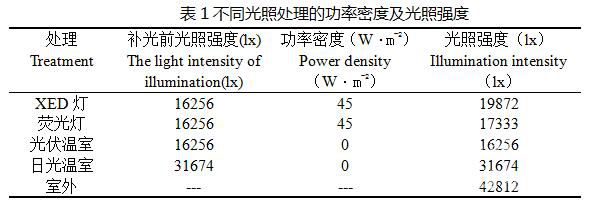
There are 9 peppers and tomato seedlings with the same growth and growth conditions. The test group and the control group 1 fill light for eight hours from 8:00 to 16:00 every day.
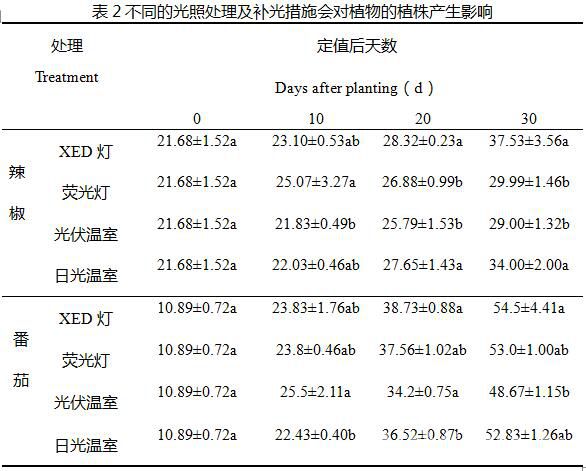
As can be seen from Table 2, there was a significant difference in the processing of the complementary light and the non-filling treatment for the pepper, and there was a significant difference in the processing of the complementary light with an increase in the treatment time. The plant height of XED fill lamp treatment is especially higher than other treatments except for daylight temperature, and the gap increases with the increase of treatment time. For tomato, XED light-filled plants had no significant difference with solar greenhouse treatment and fluorescent lamp treatment, and there was a significant difference with no-fill light treatment, which showed that plants without light supplementation were significantly weaker than supplemental light and solar greenhouse plants.
Effects of different treatments on plant stem diameter:
It can be seen from Table 2 that different light and light-filling measures have a great influence on the stem diameter of pepper. With the increase of treatment time, the XED fill light fill light treatment and other treatments have significant differences, and the difference is more and more, performance The stems of the plants that were light-filled for XED lamps were the highest. For tomato, there was no significant difference between XED fill light treatment and solar greenhouse treatment, and there was a significant difference between the other two treatments. The XED fill light and solar greenhouse treatment diameter were significantly higher than the other two groups.
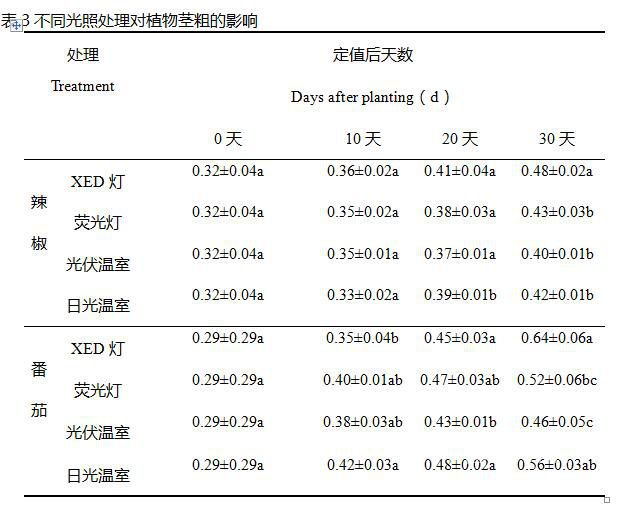
Cost analysis of XED plant fill light for plant light-filling cultivation:
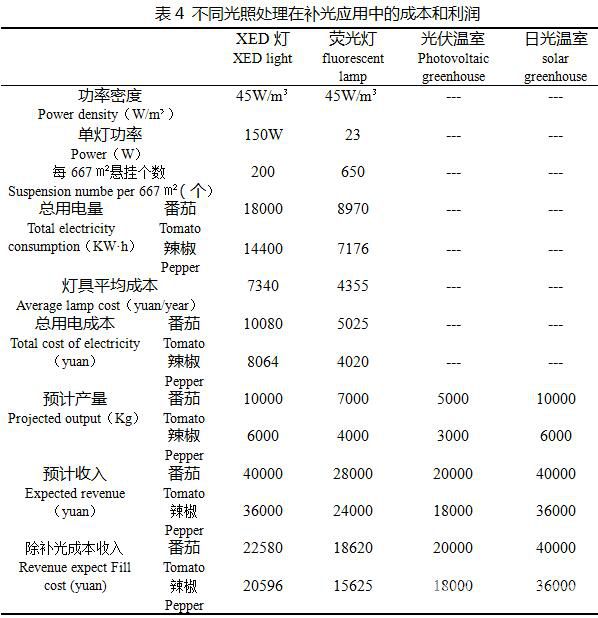
Note: The electricity price is calculated based on the latest Shandong Province agricultural production electricity price of 0.56 yuan;
The life of the XED lamp is calculated in 15 years, and the life of the fluorescent lamp is calculated in 3 years;
The price of the XED lamp is 550 yuan, and the price of the fluorescent lamp is 20 yuan;
The price of tomato pepper refers to the price of Chengyang wholesale market in Chengyang District, Qingdao City from April to May 2015. The price of tomato is 4 yuan and that of pepper is 6 yuan.
Through cost analysis, it can be seen that the XED fill lamp has a significant effect on increasing production and income when used for vegetable crop planting.
Growth status analysis:
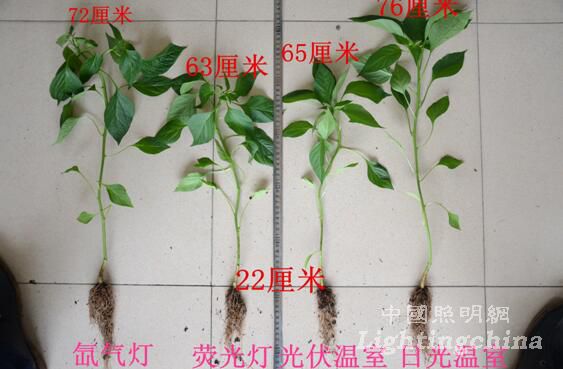
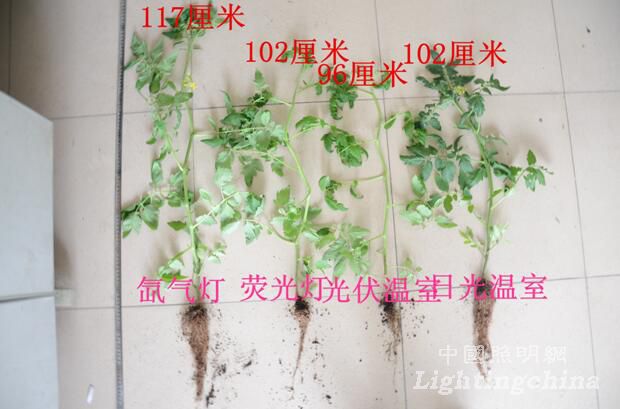
As can be seen from the figure, xenon lamps are comparable to solar greenhouse treatments and are significantly higher than fluorescent lamps and photovoltaic greenhouses.
Analysis of application prospects of XED plant fill light in photovoltaic greenhouse production:
Tests have shown that the application of xenon lamps in photovoltaic greenhouses is very good.
First, in promoting plant growth, experiments have shown that xenon lamps have a good effect on the morphology and physiological indexes of pepper in the photovoltaic greenhouse; in the case of the same power density, the promotion of pepper growth is significantly better than fluorescent lamps. .
Second, in terms of actual production adaptability and cheapness, photovoltaic greenhouses, as a new type of modern greenhouse, are mostly in the form of multiple buildings. The greenhouse has a large area, high in height and high in ridge height. Luminaires fill light, which will increase costs and cause inconvenience to production labor. The high light intensity of the xenon lamp and the large light fill area of ​​the single lamp are very suitable for large-scale multi-span greenhouses such as photovoltaic greenhouses.
Third, in other respects, xenon lamps can be combined to obtain pure monochromatic light and composite spectrum as needed, which can concentrate the light of a specific wavelength to illuminate the crop evenly. At the same time, the service life of the xenon lamp is longer than other conventional light sources, reducing the cost of use. .
In summary, the characteristics of xenon lamps are very suitable for the actual needs of large-scale multi-span greenhouses such as photovoltaic greenhouses. With the rapid development of modern agriculture, large-scale multi-storey greenhouses represented by photovoltaic multi-storey greenhouses will be more and more, greenhouses. Environmental control measures such as fill light will also be understood by more and more people. Therefore, xenon lamps will have great application prospects in plant fill light, especially in large-scale multi-span greenhouses.
Editor: Yingzi
Small Gear Motor,Customized Dc Motor,Customized Dc Gear Motor,Dc Permanent Magnet Motor
NingBo BeiLun HengFeng Electromotor Manufacture Co.,Ltd. , https://www.hengfengmotor.com